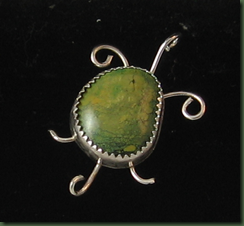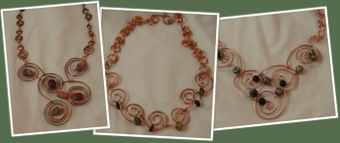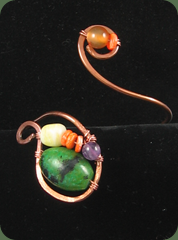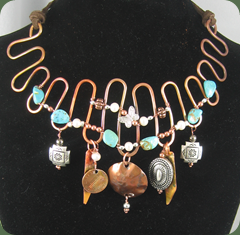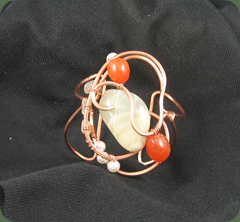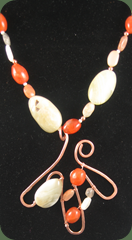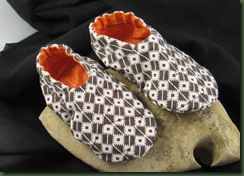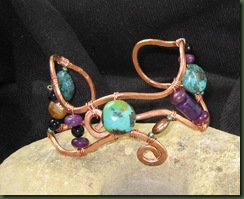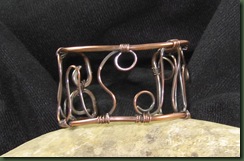A series of short articles I recently wrote for Magpie Gemstones (www.magpiegemstones.com) on creative thinking in design instigated several new necklaces. If you have interest in this topic you can find these at the following addresses:
http://www.magpiegemstones.com/creative1.html
http://www.magpiegemstones.com/creative2.html
http://www.magpiegemstones.com/creative3.html
http://www.magpiegemstones.com/Creative4.html
In making these necklaces, I was trying to apply creative thinking techniques to my preexisting skills rather than coming up with a new element to add. The question was “In what ways might I create interesting pieces through relatively simply techniques?” The first piece is a simple strung tiger eye necklace. I added small wire flowers that I had been making as earrings and used them as spacers. 
I seldom use a single color or type stone in a piece, but this one seems to work OK.
The next photo shows a simple strung necklace using glass beads. The easy pendant is made from a filigree piece to which I attached a small flower bead.
While the next necklace was more complicated, it simply combines processes I already knew. By the way, as we learn in creative thinking training, I used happenstance with regard to the copper “sticks” on the back of the bezel. They were not planned, but when I was trying to torch two straight pieces of copper wire, they fused themselves together. So I went with this mistake and used it in the design. 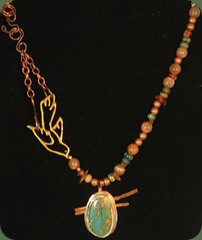 The last photo shows a simple piece derived from thinking “what if?” I just kept adding things to the basic piece of etched copper and ended up with a very long pendant.
The last photo shows a simple piece derived from thinking “what if?” I just kept adding things to the basic piece of etched copper and ended up with a very long pendant.  Although you can’t see it in the photo, there is a flower etched on the copper portion of the pendant. This pendant started as a bracelet and ended (at least for the moment) as a necklace. I think “resistance to closure” which is also practiced in creativity training worked well for this bracelet/necklace.
Although you can’t see it in the photo, there is a flower etched on the copper portion of the pendant. This pendant started as a bracelet and ended (at least for the moment) as a necklace. I think “resistance to closure” which is also practiced in creativity training worked well for this bracelet/necklace.
I guess the message I’m trying to send today is that easy methods can produce innovative designs. While I will continue to practice newly learned techniques, applying creative thinking skills to those that I have previously learned is another positive avenue for innovation. I hope you will read the short articles at the above addresses and apply them to whatever form of work you are doing. Have fun, laugh often and create for life.



